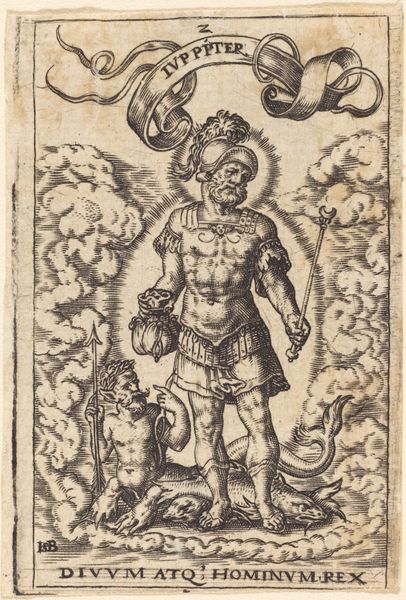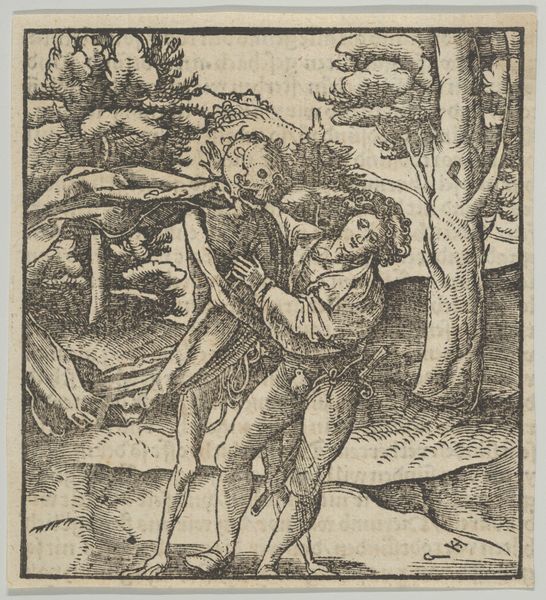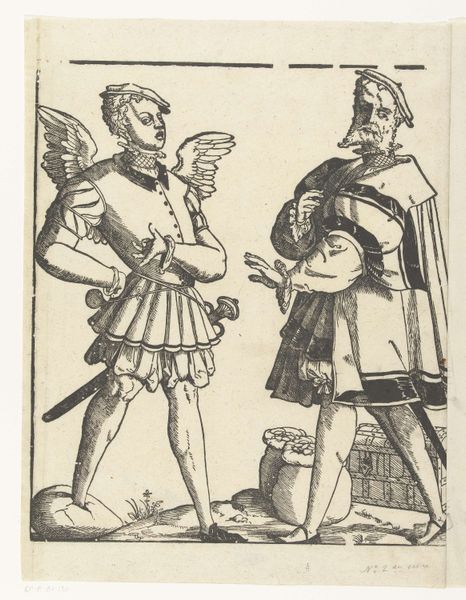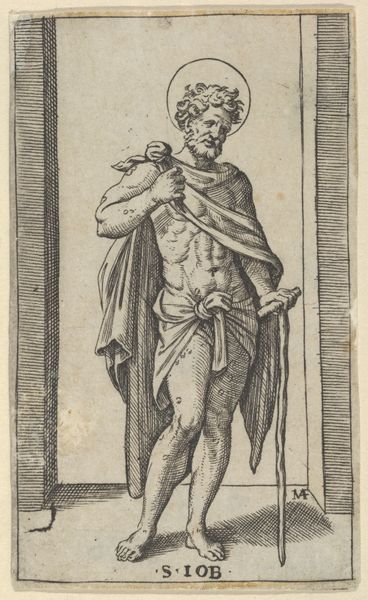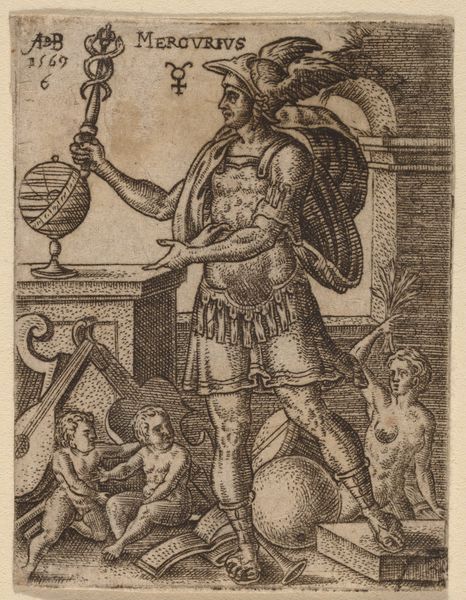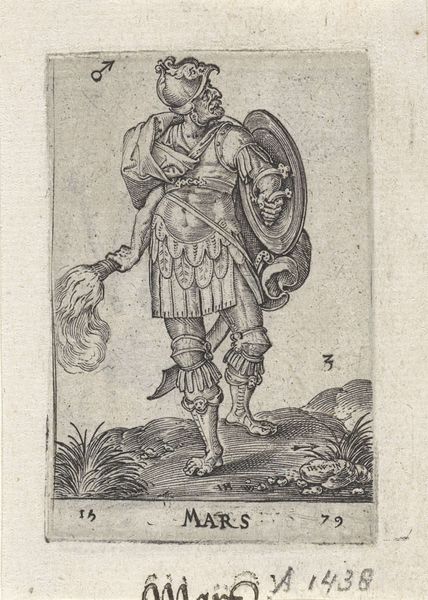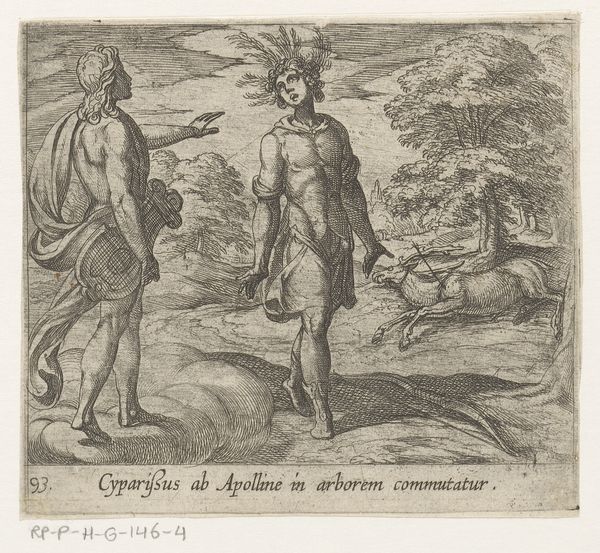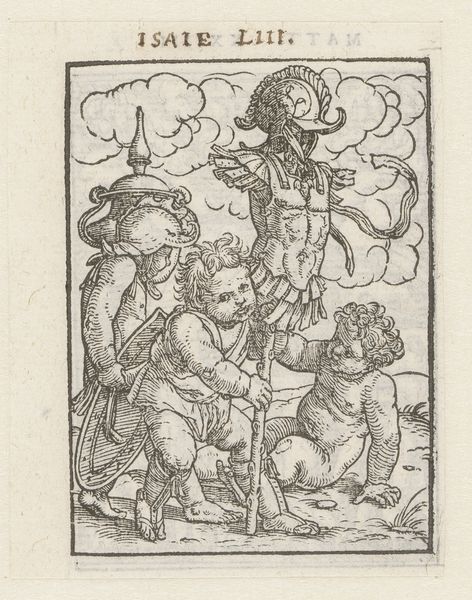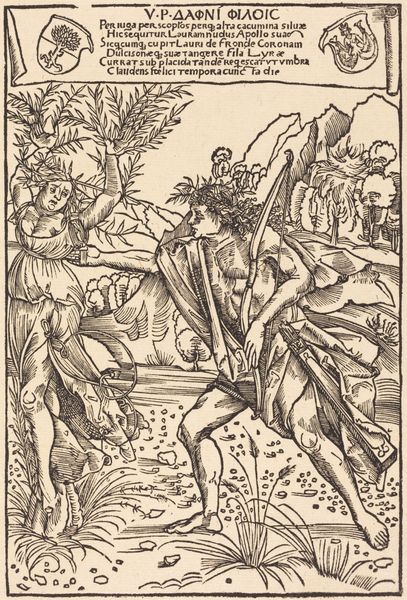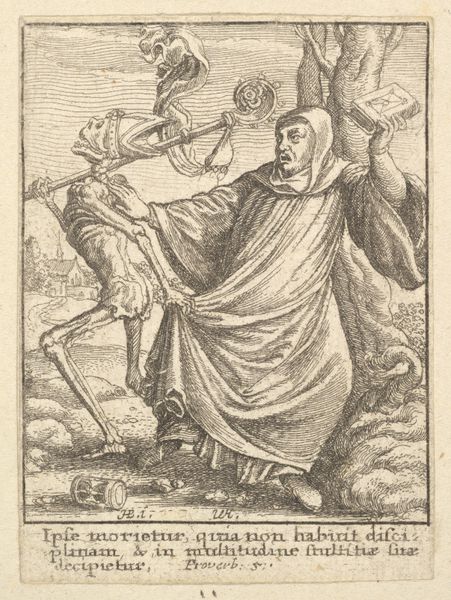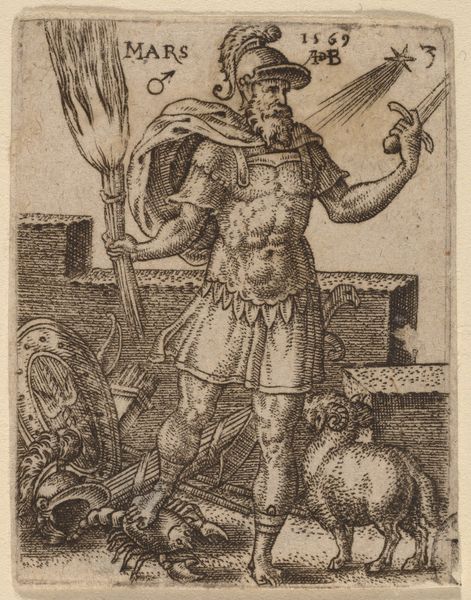
The Devil Offering Poison to a Knight, from Hymmelwagen auff dem, wer wol lebt... 1517
0:00
0:00
drawing, print, woodcut
#
drawing
#
allegory
# print
#
figuration
#
woodcut
#
history-painting
#
northern-renaissance
Dimensions: Sheet: 4 3/8 in. × 4 in. (11.1 × 10.2 cm)
Copyright: Public Domain
Curator: Here we have a woodcut, dating from 1517, created by Hans Schäufelein. Its title is quite a mouthful: "The Devil Offering Poison to a Knight, from Hymmelwagen auff dem, wer wol lebt..." Editor: Woah, that's intensely strange. I immediately get a chilling vibe. The devil has such a predatory face, offering that potion, like a perverted version of communion. Curator: Precisely. The composition here pulls from the well of established iconography, depicting a familiar morality play for its era. It's Northern Renaissance, of course. Think of the woodcut itself as an instrument: inexpensive, portable, ready to spread specific ideas and beliefs far and wide. Editor: Yes, I feel like it is so medieval to stage things in black and white morality: there's good vs evil. Yet, as much as it makes me uncomfortable, I still can't help but wonder who would not accept that offering if faced with the devil like that? He looks both powerful and slyly tempting with his… charms. Curator: In Northern Renaissance art, we are confronted time and again with temptation represented as a bodily force and an offer for earthly dominion. Here, Schäufelein translates psychological turmoil and temptation through his grotesque demon figure: a chimera-like hybrid who distorts human form into a disturbing yet potent symbol of sin. Editor: I keep finding myself coming back to this vessel the devil carries – it has a bold "U" right in the middle of it. It is meant to hold poison, yes, but perhaps some cure, or maybe some unknown in-between? It is difficult to dismiss the symbolic function of this ambiguous emblem on the Devil's vessel. Curator: The placement of the letter "U" and its scale implies an intended allusion that certainly resonates. Think, perhaps, of divine or earthly "Use," or some family's crest inverted here as a signal of their moral degradation? The devil always inverts the known world... Editor: Well, whatever that poison might be, Schäufelein created here an absolutely compelling invitation to reflect on our darker urges and desires. Curator: Indeed, these vivid symbols, these readily grasped analogies, were meant to resonate—and evidently, even today, still succeed.
Comments
No comments
Be the first to comment and join the conversation on the ultimate creative platform.
